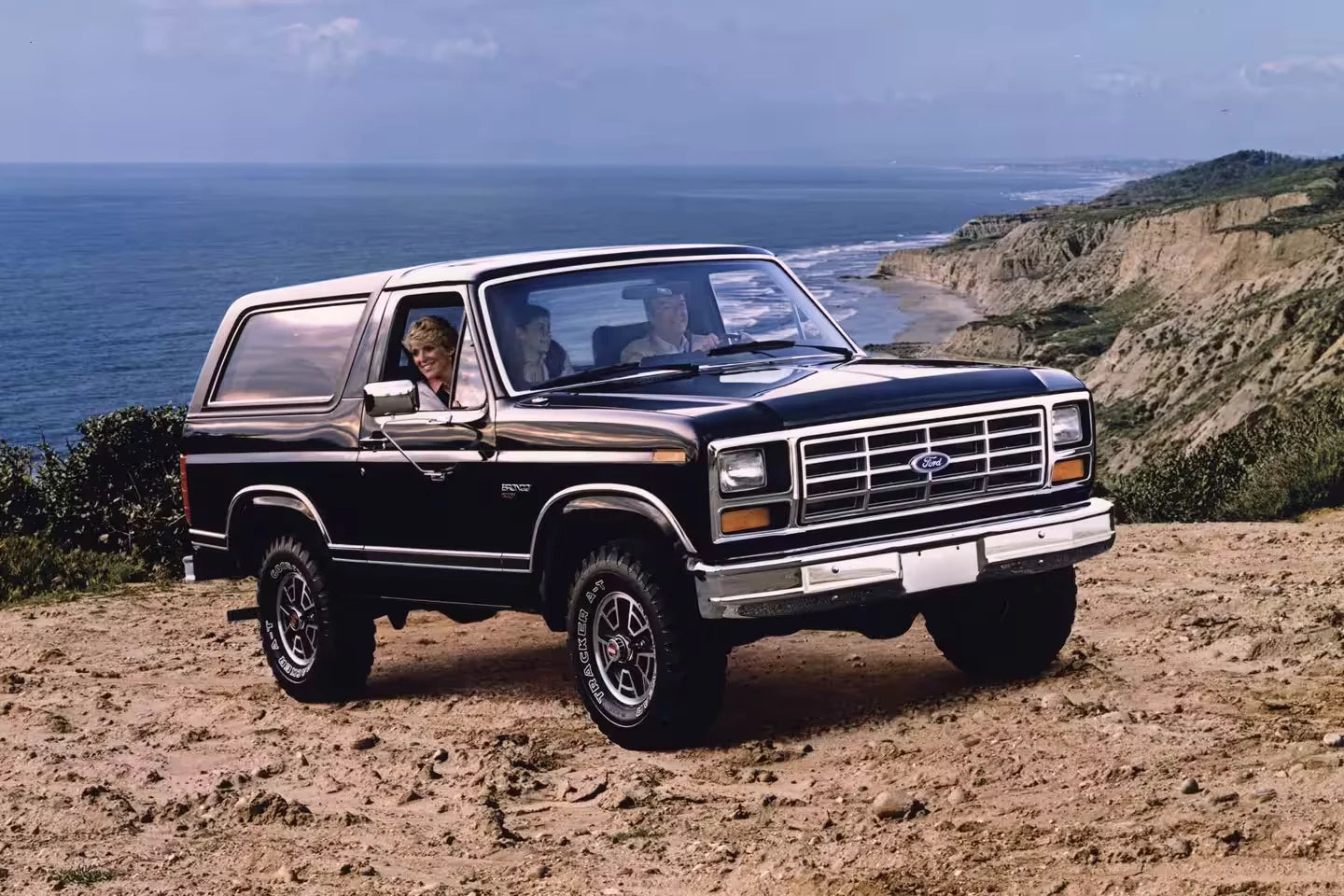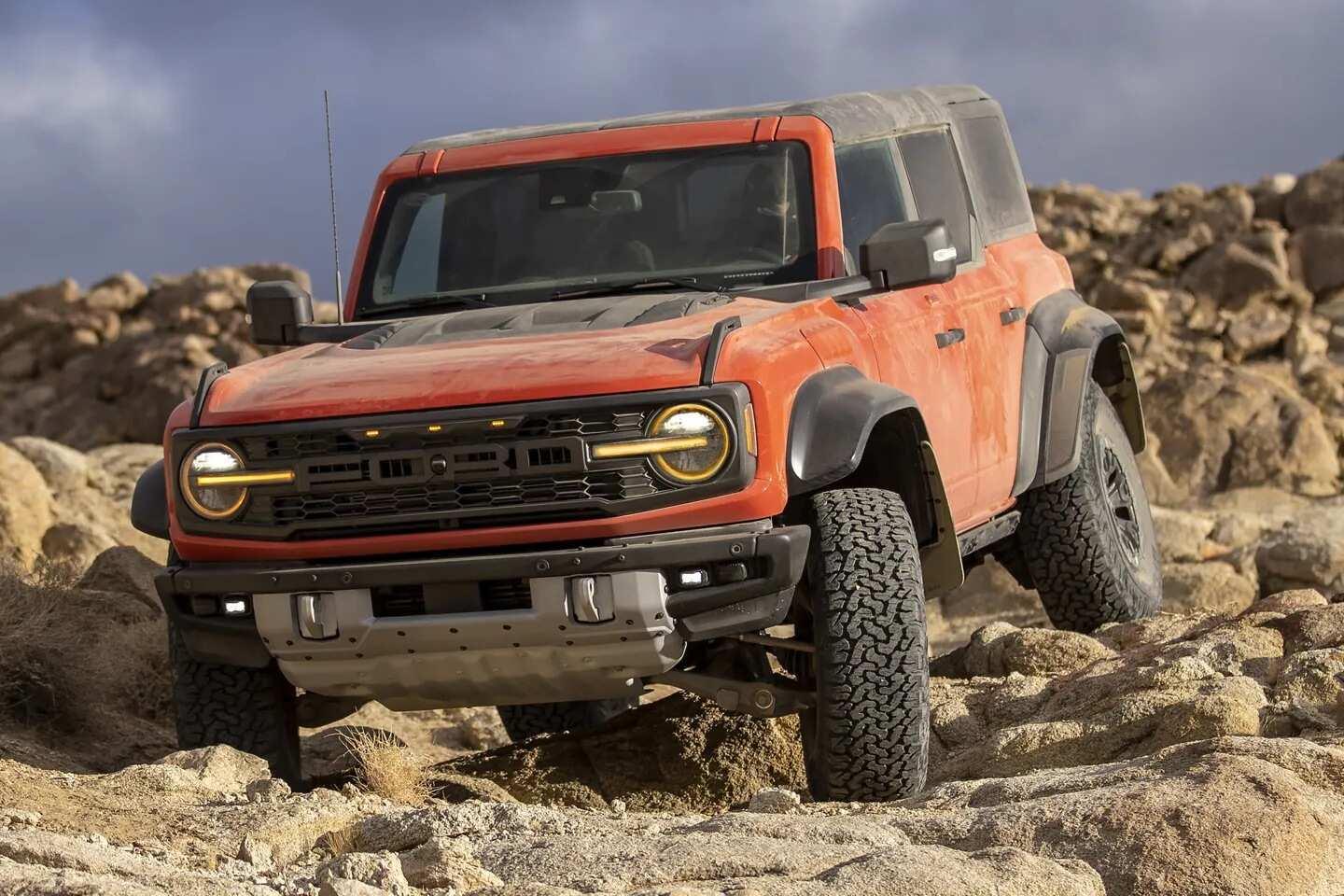The Ford Bronco, an emblem of rugged American adventure, has undergone a fascinating evolution since its debut in 1966. Designed to compete with small 4x4s like the Jeep CJ-5 and International Harvester Scout, the Bronco quickly carved out its niche in the automotive world. Spanning six generations, each iteration of the Bronco has brought new innovations, styles, and capabilities to the forefront, reflecting changing consumer tastes and technological advancements. This article embarks on a journey through time, ranking every Ford Bronco generation from its humble beginnings to its triumphant return in 2021.
First Generation (1966-1977): The Icon
The first-generation Ford Bronco, produced from 1966 to 1977, revolutionized the automotive world with its introduction, marking Ford's foray into the compact SUV market. This vehicle was designed to offer versatility and capability in a variety of settings, from city streets to rugged off-road environments. Its straightforward, utilitarian design emphasized function over form, appealing to a wide audience with its three distinct body styles: the wagon, the pickup, and the roadster. Each variant catered to different consumer needs, from daily commuting to adventurous off-roading. The original Bronco's robust build and simple, yet effective mechanical components, such as its powerful engine options and durable suspension system, made it an instant classic. Its legacy extends beyond its direct impact on the SUV segment; it set a new standard for what consumers could expect from an all-purpose vehicle.
The first-generation Bronco's influence is seen in the evolution of SUVs over the decades, laying the groundwork for a vehicle category that values both practicality and performance. Its design, characterized by clean lines and a lack of unnecessary embellishments, has become iconic, inspiring a sense of nostalgia and admiration among automotive enthusiasts. This initial iteration of the Bronco not only established Ford as a key player in the burgeoning SUV market but also cemented the Bronco nameplate as synonymous with adventure, reliability, and American ingenuity. Related Articles: Jeep Wrangler Vs Ford Bronco
Second Generation (1978-1979): The Short-Lived Colossus

The second-generation Ford Bronco (1978-1979) represented a significant departure from its predecessor, emerging as a larger, more powerful vehicle that bridged the gap between a traditional SUV and a full-size truck. This brief but impactful generation was characterized by its adoption of the F-Series platform, which provided a substantial increase in size and power, positioning it as a formidable presence on the road. Despite its short production span, the second-generation Bronco made a lasting impression with its bold design, improved on-road comfort, and enhanced off-road capabilities. It catered to a growing demand for family-friendly vehicles that could also handle the rigors of adventurous outdoor activities. With features like an optional 351 cubic inch V8 engine and a roomier interior, it appealed to consumers looking for a vehicle that combined practicality with performance.
However, the energy crisis of the late 1970s influenced Ford's decision to rethink the Bronco's size and fuel consumption, leading to a complete redesign for the subsequent generation. The second-generation Bronco thus stands as a unique chapter in the model's history, embodying the evolution of the American SUV in response to changing consumer preferences and economic conditions.
Third Generation (1980-1986): Adapting to Change

The third-generation Ford Bronco (1980-1986) symbolized a period of adaptation and innovation for the iconic SUV, reflecting Ford's response to the evolving automotive landscape of the early 1980s. This generation was introduced amidst fuel crises and growing consumer demand for more efficient vehicles. Ford's engineers reimagined the Bronco, making it lighter and more fuel-efficient without sacrificing its off-road capability and rugged charm.
The introduction of independent front suspension in later models and the shift towards a more aerodynamic design highlighted Ford's commitment to blending performance with practicality. This era of the Bronco also saw the introduction of new technologies and features aimed at improving comfort and drivability, bridging the gap between utility and family vehicle. Despite its shorter stature compared to its colossal predecessor, the third-generation Bronco maintained its place in the hearts of enthusiasts and paved the way for future innovations in the SUV segment.
Fourth Generation (1987-1991): The Era of Refinement

The fourth generation of the Ford Bronco (1987-1991) represents a period of significant refinement and sophistication within the storied lineage of this iconic SUV. This era brought about enhancements that focused on improving the overall driving experience, incorporating advanced technological features, and elevating interior comfort to new levels.
Efforts to modernize the Bronco included the introduction of electronic fuel injection, which boosted engine performance and efficiency, and the integration of more luxurious interior options, signaling a shift towards catering to consumers seeking both off-road capability and on-road comfort. This generation also saw improvements in aerodynamics and the introduction of safety features, reflecting broader automotive industry trends towards greater efficiency and passenger protection. Despite facing an increasingly competitive SUV market, the fourth-generation Bronco solidified its place in the hearts of enthusiasts by balancing traditional ruggedness with modern conveniences, thereby ensuring its continued relevance in the automotive landscape.
Fifth Generation (1992-1996): The Modern Predecessor

The fifth-generation Ford Bronco (1992-1996) marked a pivotal moment in the SUV's history, blending modern advancements with the rugged charm that had defined its predecessors. This era introduced significant improvements in safety, comfort, and performance, setting new standards for the SUV market. Enhanced with features like driver-side airbags and rear antilock brakes, it catered to a more safety-conscious consumer base. Additionally, its more aerodynamic design and the introduction of a more powerful and efficient fuel-injected V8 engine reflected a shift towards greater performance and fuel economy.
Despite its advancements and the introduction of luxury features that aimed to provide a more comfortable and refined driving experience, this generation would become the last before the Bronco's temporary discontinuation in 1996. Its legacy, however, would lay the groundwork for the SUVs of the future, bridging the gap between the utilitarian vehicles of the past and the modern, feature-rich models of today.
Sixth Generation (2021-Present): The Resurgence

Expanding the paragraph about the Sixth Generation Ford Bronco (2021-Present) involves delving deeper into its features, market reception, and how it symbolizes a modern revival of a classic brand. The 2021 Bronco re-emerges as a testament to Ford's commitment to blending heritage with innovation. This generation introduces state-of-the-art technology, seamlessly integrating it with the rugged, adventurous spirit the Bronco is known for. Enhanced 4x4 capabilities, powered by a sophisticated lineup of EcoBoost engines, cater to a wide range of driving needs, from daily commutes to challenging off-road trails. Customization is at the heart of the new Bronco, offering buyers an array of options to personalize their vehicles, from exterior colors to interior finishes and advanced technology packages.
This level of personalization, combined with a nod to the original Bronco's iconic design, has garnered enthusiasm from long-time aficionados and attracted a new generation of fans. This harmonious blend of past and present secures its place at the pinnacle of our rankings, symbolizing not just a return, but a forward-looking reinterpretation of the Bronco legacy.
Bronco II and Bronco Sport: Honorable Mentions
While not part of the main Bronco lineage, the Bronco II (1984-1990) and the more recent Bronco Sport deserve mention. The Bronco II aimed to offer a compact alternative but faced challenges, including safety concerns. The Bronco Sport, launched alongside the sixth generation, seeks to capture the Bronco spirit in a smaller, more urban-friendly package. Both models reflect Ford's efforts to diversify the Bronco's appeal, but they stand apart from the core generations.
Conclusion
The Ford Bronco's journey through the years is a testament to its enduring appeal and adaptability. From its rugged first-generation model to the sophisticated, tech-savvy latest version, the Bronco has proven it can evolve with the times while staying true to its off-road heritage. Each generation has its place in history, contributing to the legend that the Bronco has become. As we look to the future, it's clear that the Bronco will continue to inspire adventure and innovation in the automotive world.


